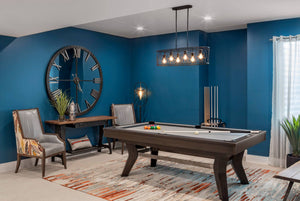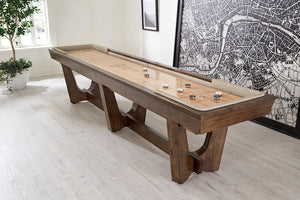What ever happened to the American Arcade?
This article is courtesy of arstechnica.com
In North America, gamers are now generally divided into two distinct generations: those that grew up in the midst of the vibrant video arcade culture of the '70s and '80s; and those born since.
The latter group's experience with arcades is primarily through redemption-machine-filled restaurants like Dave & Busters and maybe a few neglected cabinets at their local movie theater or bowling alley. But in Japan, this divide does not exist. Arcades there have continued to grow and evolve since their introduction. Multiple floors fill not just with hardcore gamers, but with families and casual players looking for the kind of face-to-face social gaming experience hard to find on this side of the Pacific.
Brad Crawford is a member of the first generation. "I remembered growing up with [arcades], and going [to Japan] and seeing what they had become was just mind-boggling," said Crawford, who became enamored with Japan's arcade culture while spending three years living there starting in 2005. The experience inspired Crawford to create 100 Yen: The Japanese Arcade Experience, a recently funded indie documentary (currently in post-production) that tries to capture a thoroughly modernized Japanese arcade experience completely unknown to most in the West.
Re-learning the arcade culture
After being removed from arcade culture for so long, Crawford told Ars it was a bit hard at first easing his way into the scene, especially in an unfamiliar country. "If you're not a super-skilled video game person, it can be pretty intimidating, because Japanese people can be pretty good at video games," he said. "It's kind of scary at times, especially if you don't speak great Japanese, which at the time I didn't at all."
Crawford said that at first he would usually just watch the high-level competition going on around him more than he would play. Eventually, he found simply sitting down for a friendly match was the best way to break through the language and culture barrier and become part of the community.
"It's hard to break the ice, but at the same time there's those games that you can always just sit down and play," he said. "There's something about that connection that you can find with people that have like-minded hobbies, and through that you can end up having a good experience and making some good friends."
"They're more concerned about not being able to communicate with you in terms of language," he continued. "If you can make video games the language, I think it can become a great tool in terms of communication. If you give them a good game they're going to respect you for that. ... It's just about putting the time in, showing up and being a regular face so you're not intimidating anymore. It's not something that happens overnight. It takes time."
Arcade demography is arcade destiny
To Crawford, the very different fates that have befallen North American and Japanese arcades has to do with demographics and urban planning as much as differing gaming tastes between the two countries. "Japan is so dense in population, such a mass of people, so that's really why things are this way, there's so much foot traffic everywhere," he said. "A lot of North America just doesn't have that quality to it."
Japan's train-based transportation culture makes it more inconvenient for
those who live downtown to visit friends in the suburbs, Crawford said.
Generally limited living space means the giant suburban basements and rec rooms
that serve as gaming palaces for many Americans are a rarity in Japan. In this
kind of environment, downtown arcades became a convenient place for people to
hang out and have fun before heading home for the night.
"People are stuck downtown waiting for their friends; they don't have massive social scenes at their houses," he said. "I don't know if I invited that many people over to my house in Japan. It doesn't happen."
These factors have combined to create a modern Japanese arcade that would be practically unrecognizable to a Westerner with memories of dingy, badly lit rooms full of young hoodlums. The gleaming, multi-floor palaces cater to all sorts of players. There are crane games and sticker-picture machines on the first floor to draw people in from the street. More hardcore players show off on carefully arranged rows of dance, fighting, and shoot-em-up games on the higher floors.
But that doesn't mean Japanese arcades were always such clean, friendly places. "When we were speaking with people, they would have similar kinds of memories of arcades having a bad reputation in Japan, of them being dark places where delinquents would go," Crawford said. "I think North America and Japan went through the same phase of gaming, but Japan didn't give up and let it die. They took that negative image and really fought against it. Companies like Taito and Sega actively looked for different ways to bring in different audiences." In other words, the only reason American arcades are remembered with a bad reputation? They never got the chance to grow out of it.

Games like this Golden Tee are more often seen in residential Man Caves than Arcades
A Western arcade comeback?
It wasn't until Crawford returned home to his native Winnipeg, Canada that he realized just how much he missed the arcade scene. He had been missing it his whole life. "Physical gaming with your friends has become something that's pretty few and far between now," he lamented. The closest he's come to recreating it on this side of the ocean is by attending massive fighting game tournaments, like the Evolution event in Las Vegas. Last year, Evolution attracted thousands of people (and over 2 million online spectators) to watch and participate in battles on games like Super Street Fighter IV and Marvel vs. Capcom 3. "You want that experience again, so any time you have that opportunity to experience even a little bit of it, you're like 'yes, give me that.'"
Events like these show there's a whole generation of Western game players, now centered around those in their mid to late 30s, looking to capture something that's missing from much of modern gaming. "Everyone wants that sense of competition, to feed their competitive nature, to beat your opponent," he said. "Now it's just so anonymous. You have little kids swearing at you and berating you [in online games]. At the arcade, you could steal their money if you beat them." Not to mention, if you curse someone out at an arcade, you'd better be big enough to defend yourself.
There have been a few spotty efforts to bring back serious arcades in the US: Insert Coin(s) in downtown Vegas and a recently repurchased Chinatown Fair in New York City among them. But with a decades-long gap since arcades were really a significant part of American social life, Crawford admits bringing them back to their previous stature outside of Japan will be tough.
"Whether we just talk about nostalgia or a movement, I think it could come back," he said. "I think we could see the culture revitalized—maybe not to its former glory, but at some level. There's people out there trying, and I applaud them for it, but it's definitely an uphill battle."




Comments
Leave a comment